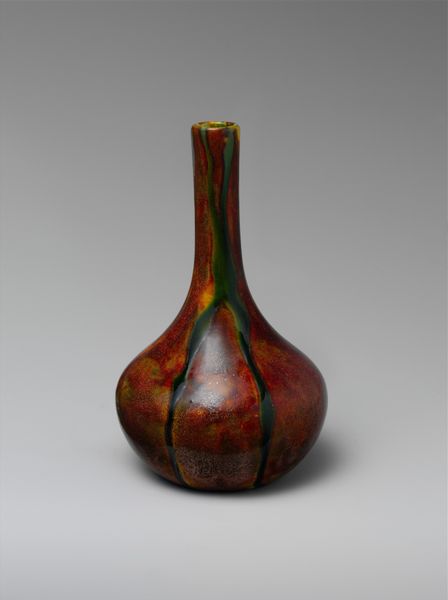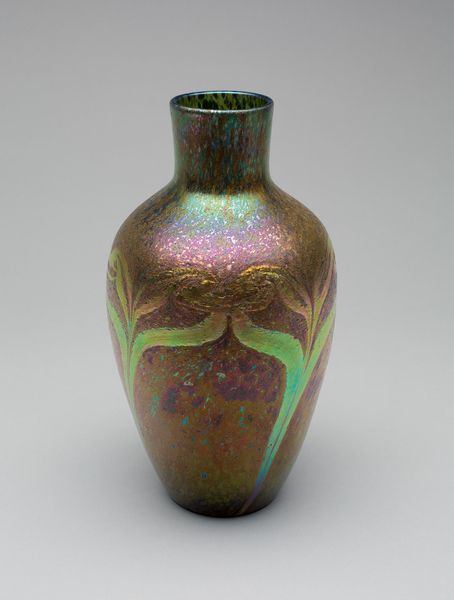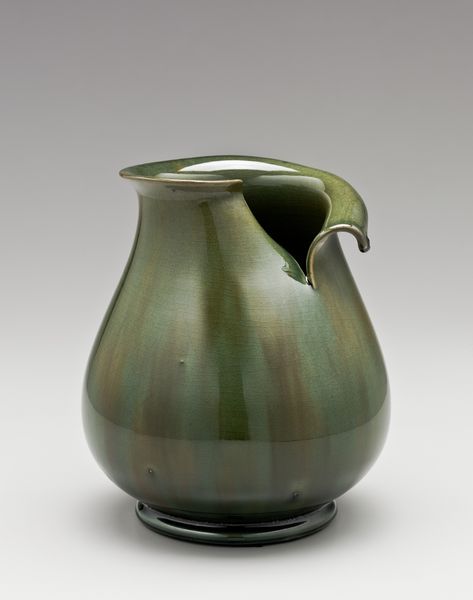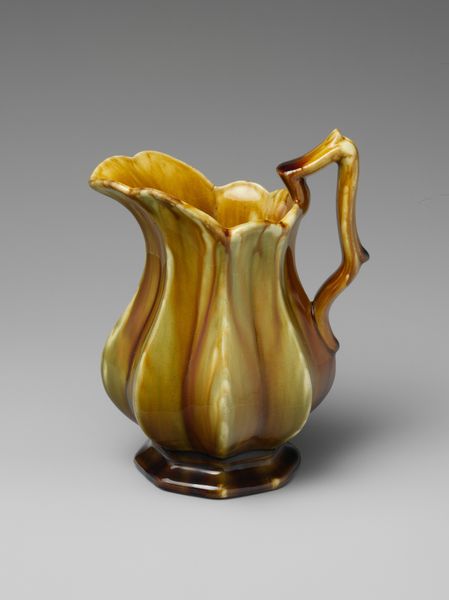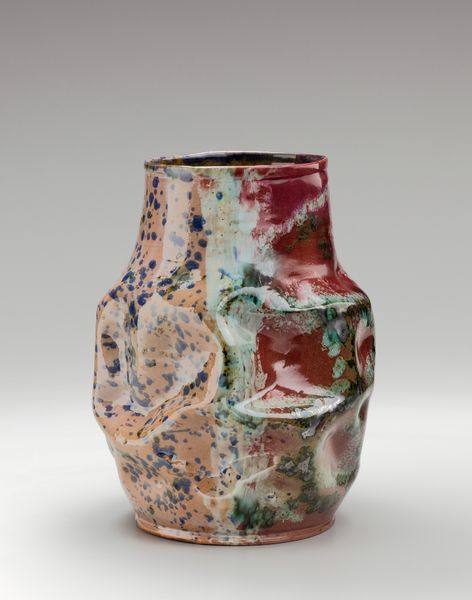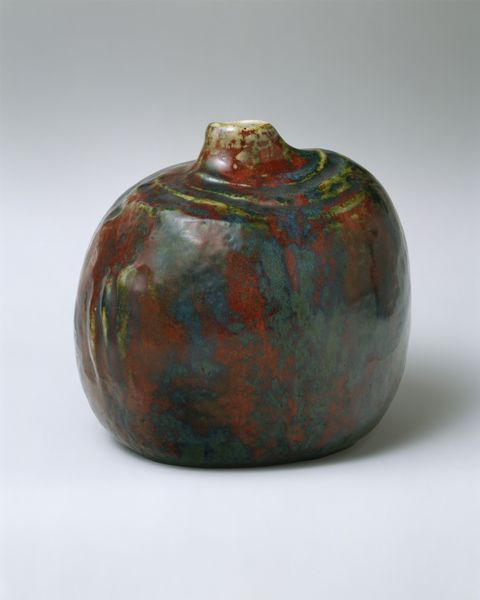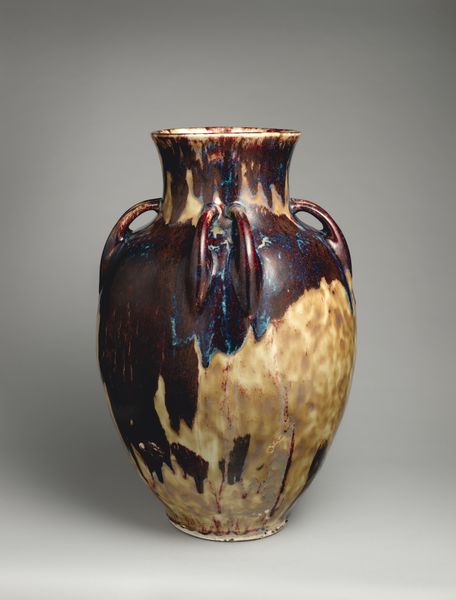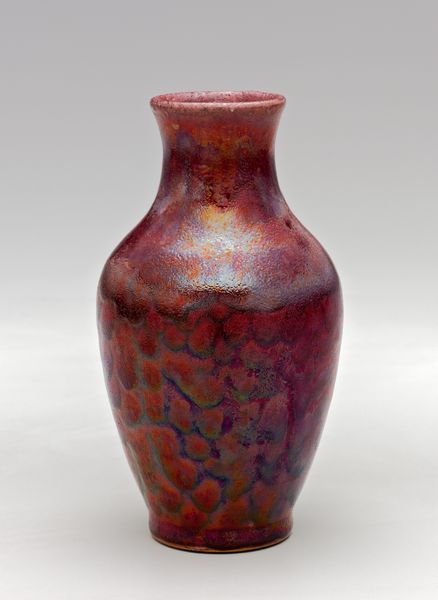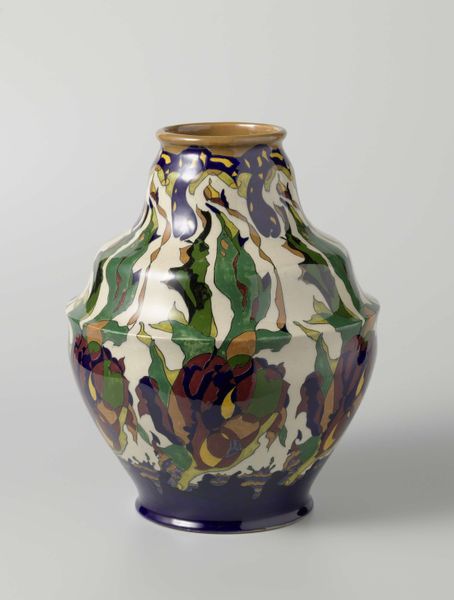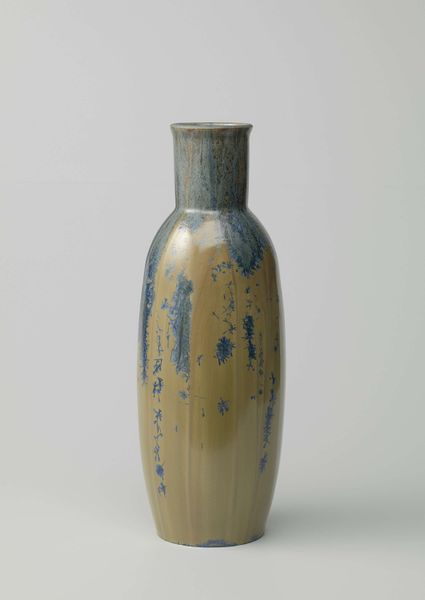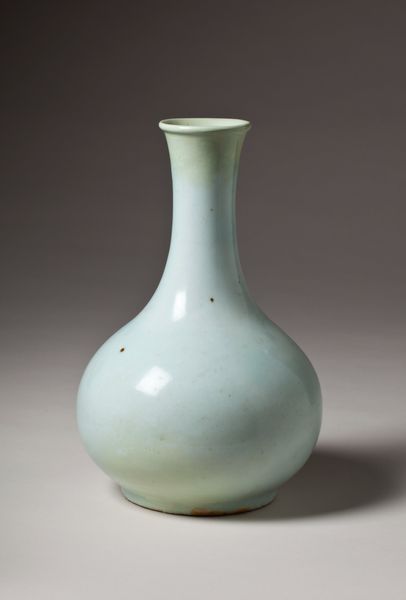
glass, sculpture
#
organic
#
art-nouveau
#
glass
#
geometric
#
sculpture
#
decorative-art
Dimensions: 3 x 2 1/16 in. (7.6 cm)
Copyright: Public Domain
This small vase was created by Louis Comfort Tiffany, most likely in the late 19th or early 20th century, using a technique called Favrile glass. Tiffany was fascinated by the iridescent effects seen in ancient Roman glass, and he sought to replicate this beauty in his own work. The process involves adding metallic oxides to the molten glass, then manipulating it while hot to create swirling patterns and a shimmering surface. The resulting glass is then hand-blown and shaped by skilled artisans, giving each piece a unique character. What I find so interesting is how Tiffany elevated glassmaking from a craft to an art form. He combined industrial production methods with handcraftsmanship, challenging the traditional hierarchy between art and design. The vase’s elegant form and iridescent surface speak to Tiffany’s aesthetic vision, while its material and production reflect the social and economic forces of his time. It's a great example of how understanding materials, making, and context can deepen our appreciation of any work of art.
Comments
No comments
Be the first to comment and join the conversation on the ultimate creative platform.


